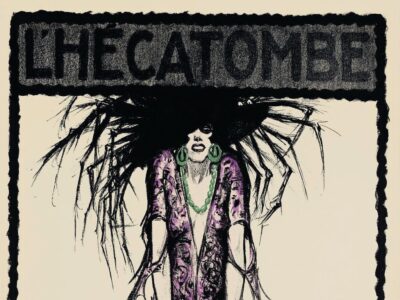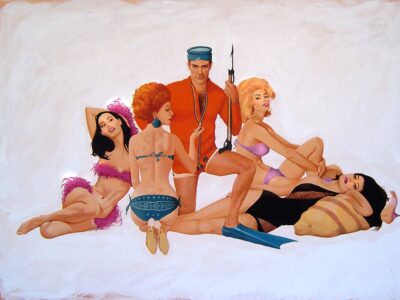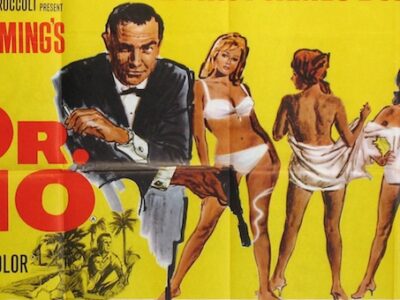 A circus is a company of performers who put on diverse entertainment shows that include clowns, acrobats, trained animals, trapeze acts, musicians, dancers, hoopers, tightrope walkers, jugglers, magicians, unicyclists, as well as other object manipulation and stunt-oriented artists. The term ‘circus’ also describes the performance which has followed various formats through its 250-year modern history. Philip Astley is credited with being the ‘father’ of the modern circus when he opened the first circus in 1768 in England. Early circuses were almost exclusively demonstrations of equestrian skills with a few other types of acts to link the horsemanship performances. Performances developed significantly through the next fifty years, with large-scale theatrical battle reenactments becoming a significant feature. The ‘traditional’ format, whereby a ringmaster introduces a varied selection of acts that mostly perform choreographed acts to traditional music, developed in the latter part of the 19th century and continued almost universally to be the main style of circus up until the 1970s.
A circus is a company of performers who put on diverse entertainment shows that include clowns, acrobats, trained animals, trapeze acts, musicians, dancers, hoopers, tightrope walkers, jugglers, magicians, unicyclists, as well as other object manipulation and stunt-oriented artists. The term ‘circus’ also describes the performance which has followed various formats through its 250-year modern history. Philip Astley is credited with being the ‘father’ of the modern circus when he opened the first circus in 1768 in England. Early circuses were almost exclusively demonstrations of equestrian skills with a few other types of acts to link the horsemanship performances. Performances developed significantly through the next fifty years, with large-scale theatrical battle reenactments becoming a significant feature. The ‘traditional’ format, whereby a ringmaster introduces a varied selection of acts that mostly perform choreographed acts to traditional music, developed in the latter part of the 19th century and continued almost universally to be the main style of circus up until the 1970s.
As styles of performance have changed since the time of Astley, so too have the types of venues where these circuses have performed. The earliest modern circuses were performed in open air structures with limited covered seating. From the late 18th to late 19th century, custom-made circus buildings (often wooden) were built with various types of seating, a centre ring, and sometimes a stage. The ‘traditional’ large tents, commonly known as ‘Big Tops’ were introduced in the mid-19th century as touring circuses superseded static venues. These tents eventually became the most common venue and remain so to the present day. Contemporary circuses perform in a variety of venues including tents, theatres and casinos. Many circus performances are still held in a ring usually 13 m (42 ft) in diameter. This dimension was adopted by Philip Astley in the late 18th century as the minimum diameter that enabled an acrobatic horse rider to stand upright on a cantering horse to perform their tricks.
Contemporary circus has been credited with reviving the circus tradition since the 1980s when a number of groups introduced circus based almost solely on human skills and which drew from other performing art skills and styles.
The World’s Largest Poster Collection
 Jaap Best (Left – photograph taken by Peter Zonneveld in 1972) caught the circus bug at the age of 7, when the Wilhelm Hagenbeck and Corty-Althoff circuses pitched their tents in his hometown of Alkmaar. Once bitten, he went to all the performances he could, and also started to collect circus bills and posters.
Jaap Best (Left – photograph taken by Peter Zonneveld in 1972) caught the circus bug at the age of 7, when the Wilhelm Hagenbeck and Corty-Althoff circuses pitched their tents in his hometown of Alkmaar. Once bitten, he went to all the performances he could, and also started to collect circus bills and posters.
In 1947 he started his own career in the circus, working first on the clerical staff, and later as secretary to the board of the Karel Strassburger circus. In the 1960s he was an administrator at Circus Carola Williams-Althoff, the Wiener Eisrevue, Circus Harry Belli and the Berliner Eisrevue, when he amassed a collection of circus memorabilia that was unparalleled in the Netherlands.
The scope of this collection widened in 1964, when Jaap Best became the owner of the archives of the German acrobat and circus collector Erdwin Schirmer. This consisted largely of the wonderful posters printed by Adolph Friedländer, a famed German lithographer and publisher from Hamburg, Germany. The collection contains nearly 3,500 colour lithographs, it is the largest collection of Friedländer’s work in the world.
Jaap Best was not only a circus collector but also a circus historian, whose writing for the trade journal De Piste (The Ring) and for his 70 Jaar circus in Nederland (70 Years of Dutch circus; 1971) was both detailed and thorough. For over fifty years he was an oracle for anyone wishing to know anything about the circus.
Jaap Best and his wife founded the Jaap Best Circus Archive Foundation. He had devoted his life to collecting vintage circus posters from across Europe and although he gave very little access to his collection during his lifetime, he intended it to be enjoyed by all after his death. Following his death in 2002, the Jaap Best Circus Archive Foundation bequeathed his 8,000 posters, 7,000 photos and picture postcards; hundreds of books, magazines and prints; thousands of circus programmes and newspaper cuttings; and special circus memorabilia to the Teylers Museum in Haarlem, with who Jaap Best had maintained close contact.
The Teyler Museum agreed to facilitate storage of the archive and to open the collection to the public. At the same time, to make the posters more accessible to the public, Pictura was approached to make digital photographs which could be posted online. An online database was launched on 9th June 2005, circusmuseum.nl and is the largest online circus poster collection in the world.
Foundation board member Herman Voogd says: “These are historic documents. You can think what you like about it, but the old style of a circus is disappearing: in many places, they don’t allow live animal shows anymore. But these lithographs are so beautifully designed – they were all originally hand-painted – and now everyone can enjoy them.”
The Jaap Best Circus Archive Foundation
Information and images sourced from Jaap Best Circus Archive Foundation, circusmuseum.nl.
If you liked the website, found it useful and would like to help with its continued ad-free development, you can make a donation via PayPal. Small or large, it doesn’t matter, every little helps! We thank you for your continued support.


























